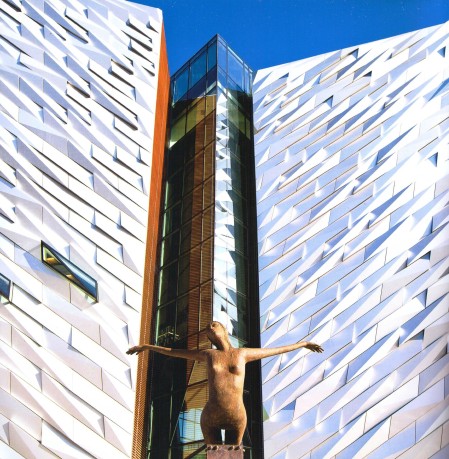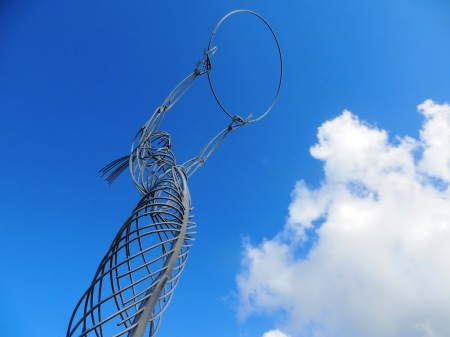Building and Sinking of the Titanic…
“I cannot imagine any condition which would cause a ship to founder. I cannot conceive of any vital disaster happening to this vessel. Modern shipbuilding has gone beyond that.” – Captain Edward Smith
“You could actually walk miles along the decks and passages covering different ground all the time. I was thoroughly familiar with pretty well every type of ship afloat but it took me 14 days before I could, with confidence, find my way from one part of that ship to another.” – Charles Lightoller, Titanic Officer.
Everyone knows the story of the RMS Titanic. When it was launched in 1912 it was the largest ship ever built. It was the biggest thing ever built that moved. It weighed sixty thousand tonnes and its two thousand one inch thick steel hull plates were held together with three million rivets. It was proudly proclaimed as the safest ship ever built.
It might have been considered unsinkable but on its maiden voyage the unthinkable happened and it sunk after colliding with an iceberg in the North Atlantic and Captain Edward Smith was obviously absolutely hopeless at making accurate maritime predictions.
He may not also have been much of a sailor either. In January 1889 approaching New York on her final White Star sailing, he managed to run RMS Republic aground. In 1890 he ran the White Star RMS Coptic aground in Rio De Janeiro and in 1909 he ran another White Star liner, the RMS Adriatic, aground also in New York.
In 1911 as Captain of the White Star ship RMS Olympic he nearly crushed a tug in New York harbour and on the only voyage of the Titanic there was a near collision in Southampton with a steamer which by strange coincidence just happened to be called the New York.
To be fair collisions in the Atlantic Ocean and in the sea ports were quite common because as the cruise author John Maxtone-Graham wrote, “There were many more close calls on the western ocean than passengers ever heard about”. This was the case because the Atlantic Ocean was significantly busier than it is today. Cruise fans today well might tell you that it is the only way to travel, but in the first half of the twentieth century if you were travelling to the United States, it was.
Given his unfortunate record of running into things and damaging company property it might seem odd therefore that White Star Line trusted Captain Smith with the biggest ship ever to take to the seas. It may also not have escaped reader’s notice that most of these incidents involve New York in one way or another and that was exactly where the Titanic was heading. Even a raging sceptic would have to admit that these were bad omens.
Anyway, what was a disaster for the White Star Line, the Harland and Wolff shipyard and the one thousand five hundred people who died that night, every cloud has a silver lining and the new Titanic quarter in Belfast is a runaway success story as the city continues to regenerate itself and become a serious tourist destination.
It was cool this morning but the sun was shining as we left the hotel and made our way to the banks of the River Lagan. This is another area that has been seriously improved. Twenty years ago this was by all accounts a desperately unsightly area with vast mud banks that were unattractive, smelly and dirty but massive investment has funded the construction of waterside embankments and a new weir controls the levels of the water in the river to keep it permanently full and attractive.
On the way we passed by the Beacon of Hope Statue and then Belfast’s Big Fish which commemorates the Lagan regeneration project and then we crossed the river and made our way to the museum. From the outside this is a magnificent structure designed in such a way that captures perfectly the spirit of the shipyards, ships, the sea, ice and the White Star Line’s logo.
This wasn’t the first time that I had visited a museum about a ship that sank on its first time at sea because in 2004 I visited the Scheepvaartmuseum or Maritime Museum in Amsterdam which has a full sized replica of the three masted ‘Amsterdam’, a ship of the Dutch East India Company, which in its maiden voyage sank in a storm in the English Channel in winter of 1749.
Actually, it isn’t that unusual for ships to go down on their maiden voyage and Wikipedia lists dozens of them it is just that the story of the Titanic has caught the imagination of the World and after one hundred years shows no sign of running out of steam.






How in the world did they pick him to captain the ship?
LikeLike
After 32 years he was the most senior captain with the White Star Line. Perhaps the others crashed more than he did?
LikeLike
He sure did have a run of “bad luck” …
LikeLiked by 1 person
Disappointed not to see a picture of Big Fish! We had to wait a good half an hour to get a clear shot of it, after all the backpackers had finished climbing on it and taking selfies!
LikeLike
It is coming up soon!
I am so glad that you went there before me, I followed your footsteps around the city! Thanks for that.
LikeLike
Funny your timing on the Titanic. I have just started reading Titanic’s Last Secrets by Brad Matsen and have begun a chapter about the White Star Line, the Harland and Wolff shipyard, but nothing about the captain yet. 😮
LikeLike
If you like Titanic stories then you would definitely like the museum!
LikeLiked by 1 person
Yes, you’re right. I have been and am intrigued by all things Titanic.
LikeLike
http://www.titanicfacts.net/the-titanic.html
LikeLike
Thanks, Andrew. Everything about this ship is fascinating. I can’t wait to catch up here to stick my nose in my book for the afternoon. Enjoy your Sunday. 🙂
LikeLike
Hard to imagine him being chosen for captain with that sort of record.
LikeLike
http://www.telegraph.co.uk/history/titanic-anniversary/9555820/Captain-of-the-Titanic-failed-navigation-test.html
LikeLike
Soooo, in essence, it’s a good thing for the people of Belfast today that the Titanic sank over a hundred years ago. It’s all good in the name of tourism 🙂 P.S. For us budget travelers – was the museum expensive? Did you spend a lot of time in there?
LikeLike
Excellent value at £12.50 and it took about two and a half hours to go around.
LikeLiked by 1 person
Thanks:)
LikeLike